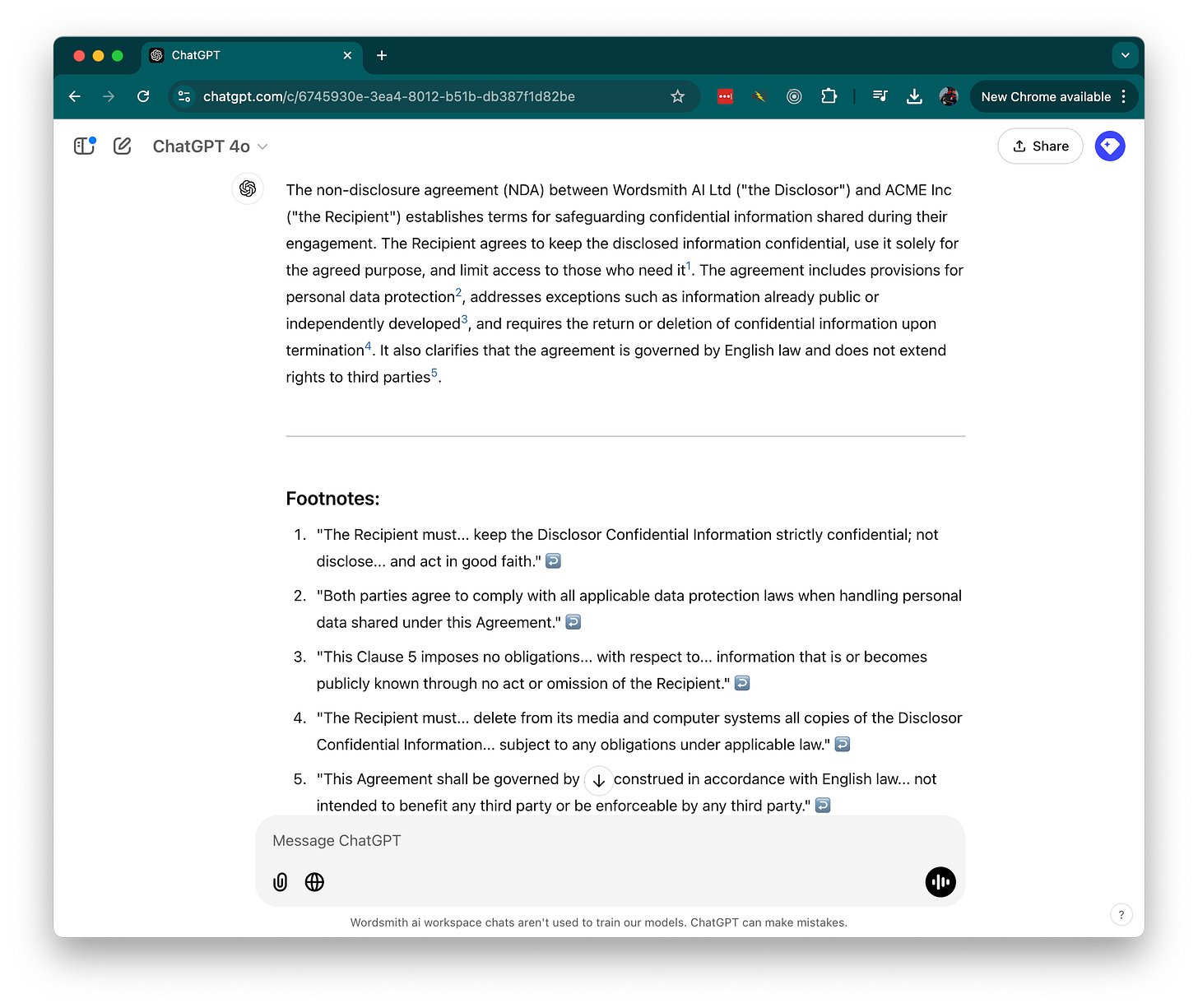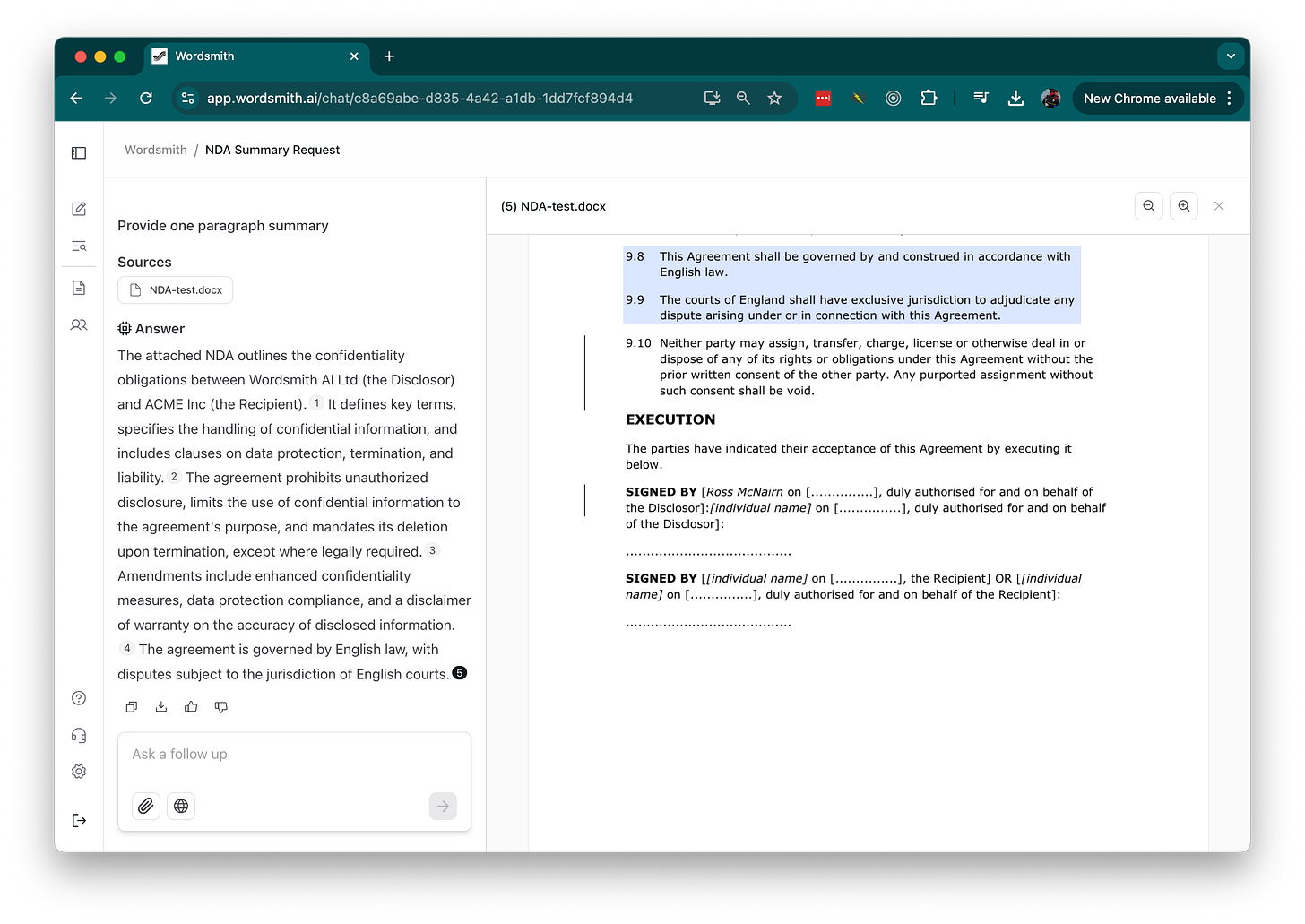↩️ Markdown Tricks: Footnotes
Enhance your AI answers with simple citations
In my previous post, Markdown: The Secret Language of AI, I discussed how leveraging markdown can enhance your interaction with AI. Today, let’s focus on a specific markdown feature that can dramatically improve the utility of AI-generated responses: footnotes.
Problem
When asking AI to summarize or analyze a large document, it’s often useful to trace its responses back to the original text. This not only helps increase accuracy of the answer but also allows you to easily validate the answer against the source document.
One way to address this is by requesting AI to include quotes from the document into the answer, but this approach can clutter the response and make it harder to read. A more elegant alternative is to use markdown footnotes to neatly organize citations.
The Markdown Footnote Trick
Markdown supports footnotes, a handy feature for including detailed citations without interrupting the flow of the main text. Both ChatGPT and Claude understand this syntax, allowing you to generate cleaner, more professional responses with built-in references.
Here’s how it works:
Use Footnote Syntax: When prompting the AI, ask it to use the markdown syntax of
[^1]for footnote references.Include Source Quotes: Instruct the AI to quote relevant text from the document in the corresponding footnote.
Example Prompt
Below is a practical prompt you can use:
<your document text>
---
Provide a one-paragraph summary of the document above. Include footnote references using markdown syntax of [^1], and put quotes from the original text in footnotes below your answer.Example Output
Here’s an example of what the response might look like:
Notice the clean and organized references in the answer, along with their corresponding footnotes. The links are clickable, allowing you to navigate from a reference to its footnote and back to the relevant place in the text seamlessly. And you can search the quotes from the footnotes in the original document to locate the relevant part of the document.
Conclusion
Using markdown footnotes is an easy way to enhance the clarity and professionalism of AI-generated answers. By explicitly requesting citations in the form of footnotes, you can make responses not only more useful but also more visually appealing.
Advanced Legal AI tools often take this a step further, offering inline highlights within the original document. Here is, for example, how we do citations at Wordsmith:
But even with basic markdown footnotes, you can unlock a whole new level of precision and utility in AI answers.



